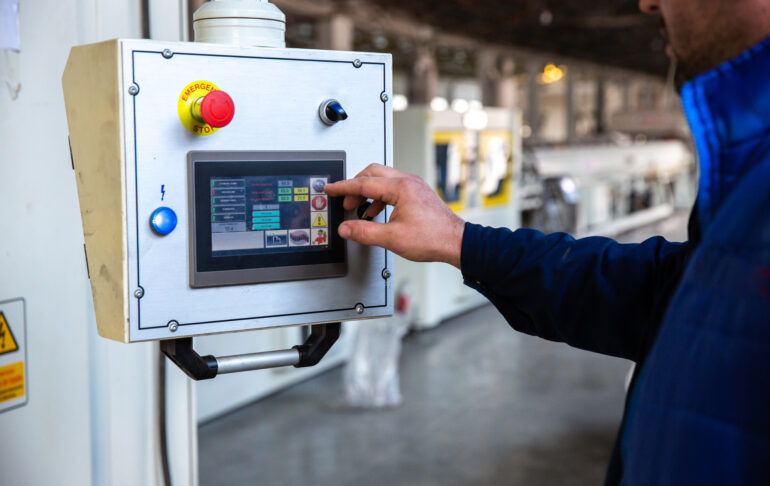
Exploring How Input and Output Modules Work in a PLC System
Programmable Logic Controllers (PLCs) are like smart brains that control machines in factories. They use input and output modules to talk to sensors and devices in the real world.
- What They Do
Input Modules: These modules listen to what’s happening in the factory, like checking if a door is open or closed or if a machine is working. They take this information and send it to the Programmable Logic Controllers to make decisions.
Output Modules: These modules are like the hands of the PLC. They receive commands from the PLC and make things happen in the factory, like starting or stopping a machine or turning on a light.
- How They Handle Signals
Input Modules: They clean up signals from sensors, making sure they’re clear and understandable to the PLC. They also protect the PLC from any electrical problems that could mess up the signals.
Output Modules: They take commands from the PLC and change them into signals that machines and devices can understand. They also make sure these signals are strong enough to do their job properly.
- Different Types of Signals
Input Modules: They can understand signals that are either on or off, like a switch, or signals that change smoothly, like a temperature sensor.
Output Modules: They can send signals that turn things on or off, like starting or stopping a motor, or signals that change smoothly, like adjusting the speed of a conveyor belt.
- How They’re Set Up
Input Modules: You can change how input modules work to fit different sensors or switches. If you need more sensors, you can add more input modules to the PLC.
Output Modules: Just like with input modules, you can adjust output modules to work with different machines or devices. If you need to control more machines, you can add more output modules.
- Checking for Problems
Input Modules: These modules can tell if there’s something wrong with the sensors or if there’s a problem with the signals they’re getting.
They can then alert you, allowing you to address the issue.
Output Modules: They can also spot problems, like if a machine isn’t responding to commands, or if there’s too much electricity going through the wires. This helps keep everything running smoothly.
- How They Talk to the PLC
Input Modules: They talk to the PLC using special ways, like sending signals through wires or using Wi-Fi. This lets the PLC know what’s happening in the factory.
Output Modules: They communicate with the PLC in similar ways, sending signals to machines and devices to tell them what to do.

Benefits of PLCs in Industrial Automation Made Simple
Programmable Logic Controllers (PlCs) are like super helpers in factories, making things run smoother and better. Here’s why they’re so great:
Easy Changes: PLCs can adapt quickly to changes in production needs without causing big interruptions. They can be reprogrammed easily to handle new tasks or adjust to different products.
Grow with You: Whether you need to expand production or add new machines, PLCs can grow along with your business. They’re like Lego blocks that you can add or remove without much hassle.
Always Working: PLCs are tough cookies. They can handle tough conditions in factories without breaking down. Plus, they’re smart enough to find and fix problems on their own, so your production keeps running smoothly.
Simple to Use: Even if you’re not a tech genius, you can understand how to program a PLC. It’s like teaching a robot simple tricks using easy-to-understand languages.
Keep an Eye from Afar: With PLCs, you can watch over your factory from anywhere. You can see if everything’s working fine or if there’s a problem, even if you’re not physically there.
Works Well with Others: PLCs play nice with other systems, like computer programs or monitoring tools. They share information easily, helping everything work together smoothly.
Save Money: Using PLCs is a smart investment. They save you money by cutting down on wiring, maintenance, and energy costs. Plus, they help you make more products in less time, boosting your profits.
Safety First: PLCs make sure your workers stay safe by stopping accidents before they happen. They have special features that keep an eye on things and stop machines if something goes wrong.
Fast and Accurate: PLCs work super-fast and do exactly what you tell them to do. This means your machines run smoothly and your products come out just right every time.
Ready for the Future: PLCs are always getting better with new technology. They can keep up with changes in the industry, making sure your factory stays ahead of the game.
So, in simple terms, PLCs are like your factory’s best friend, helping it run smoothly it run smoothly, safely, and efficiently.
Read more – https://nmagroup.in/advantages-of-industrial-motor-control-using-plc/


